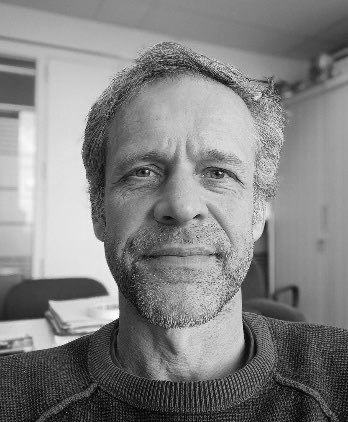News, SPPIN seminars
5th june 2024 – Pieter VANDEN BERGHE – Imaging cellular interactions and activity in the intestinal wall using linear and non-linear optical techniques
Prof Pieter VANDEN BERGHE, Lab. for Enteric NeuroScience (LENS), University of Leuven, Belgium
SPPIN’s webinar 2024, 5 June at 14h00 in SPPIN common room E368 (3e étage campus Saint-Germain)
Imaging cellular interactions and activity in the intestinal wall using linear and non-linear optical techniques


Gastrointestinal functions, such as motility, absorption and secretion, and – to some extent – host defense are controlled by the enteric nervous system (ENS). Although quite some information is now available about migration, proliferation and differentiation of enteric progenitors, our understanding of how developing and mature ENS cells interact to form a functional gastrointestinal system and keep it healthy over decades of lifespan remains limited.
Microscopy techniques have greatly contributed to our understanding of the gut’s architecture and to the description of morphology and chemical coding of the contributing cells. For measuring cellular activity, compared to sharp or patch clamp electrophysiology, imaging with Ca2+ sensors benefits from the fact that multiple cells can be imaged at the same time, which makes studying interactions easier and allows correlating cellular activity with spatial organization. In our lab, we use 3-D imaging and optical modulation of cellular activity to understand how cells interact, what the stimuli are that activate them and what the direct consequences are for the neighboring cells. In combination with advanced optics (2-photon, spinning disk confocals) these help to shed light on how functional units in the intestinal wall are being built. In the Lab. for Enteric NeuroScience we use several transgenic mouse lines and viral vector technology to induce expression of genetically encoded indicators (for Ca2+:GCaMP3/6) and actuators (Channelrhodopsin2) in enteric neurons and/or glia. Apart from fluorescence technology we also use second harmonic (SHG) imaging to determine the content and structure of the collagen lattices in the intestinal wall in several different conditions.
The combination of genetic and advanced optical approaches will remain extremely valuable to study and understand how functional intestinal nerve circuits develop and continue to interact throughout life.
Host: Martin Oheim. contact him if you want to meet with Pieter
